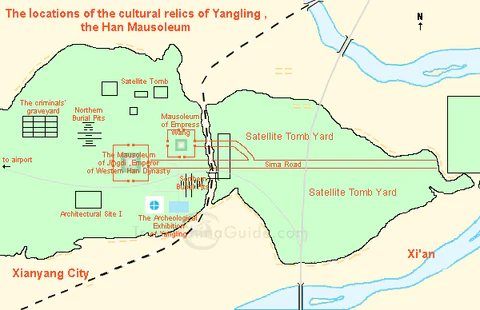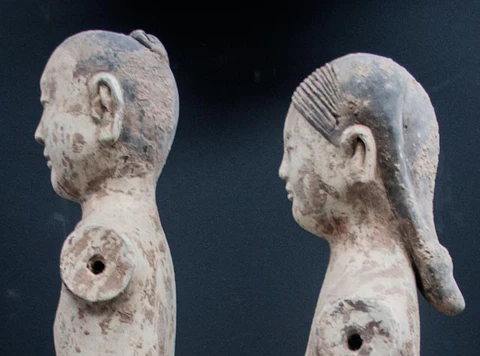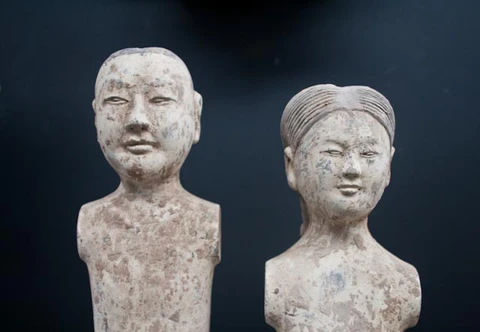Visit March 2014: the Han Yang Ling Mausoleum
Considered to be one of the most important discoveries of the last 25 years, the Yang Ling Mausoleum is the joint tomb of the Western Han Dynasty Emperor Jing Di (fourth emperor of the Western Han Dynasty) and his Empress, Wang.
It is located about 20 km to the north of the city center of the provincial capital of Xi’An. It is one of the “Five Mausoleums” of the Western Han Dynasty.

While digging for water in the late 1980s, farmers came across an amazing discovery. The authorities were alerted and in 1990 controlled excavations began. They found more than 80 long narrow pits, varying from 4 to more than 100 meters long, radiating from the Emperor’s tomb like numbers on a clock dial. So far, only 10 pits have been excavated.
Each pit contained terracotta goods for the afterlife including thousands of animals, dogs, sheep, goats and pigs all formally laid out ready for slaughter. There were stoves, grain jars, wine vessels, horses and chariots all intended for the Emperor’s use in the next life.
What amazed historians even more was the discovery of thousands of nude and semi-nude, armless figures of warriors one third life-size. The statues had been placed in battle formation and, although some of the pits had collapsed in antiquity causing severe damage, some had remained intact with the warriors still in their original positions surrounded by compacted soil.

The warriors were mostly between 55 – 63 cm in height and all were armless. On each shoulder a circular hole would have once housed a wooden pin that held (probable) wooden or silk arms in place.
What was striking were their faces. It was clear that although the bodies had been mass produced a great amount of time and effort had gone into the production of the heads which seemed to include examples from all the diverse tribes that made up the Han army. Some had high cheekbones indicating that they represented the northern tribes yet others had soft, almost sensual faces.

Most were naked clearly showing their sexual organs. Detailed examination revealed that some still had the remains of cloth attached to their heads and bodies, which had almost welded to the clay strongly indicating that clothing of some kind had been used. After much painstaking research officials reported that the warriors had indeed been clothed in brightly colored silk robes and then placed in the pits in battle formation.
Amongst this vast army archaeologists found a smaller number of eunuchs and female statues. The long hair of the female statues had been carefully modeled in a ponytail and great attention had been paid to their faces and sexual organs. The reason that females were represented is not known. However, some historians suggest the Han army had a highly trained female unit which would have fought alongside their male colleagues.
Discover Han-Dynasty Statues at The Silk Road Collection
We have a limited edition of Han and Tang Dynasty Statues in our collection. The precious statues are certified originals included with certificates of authenticity. Register for an account to see their availability in our webshop.